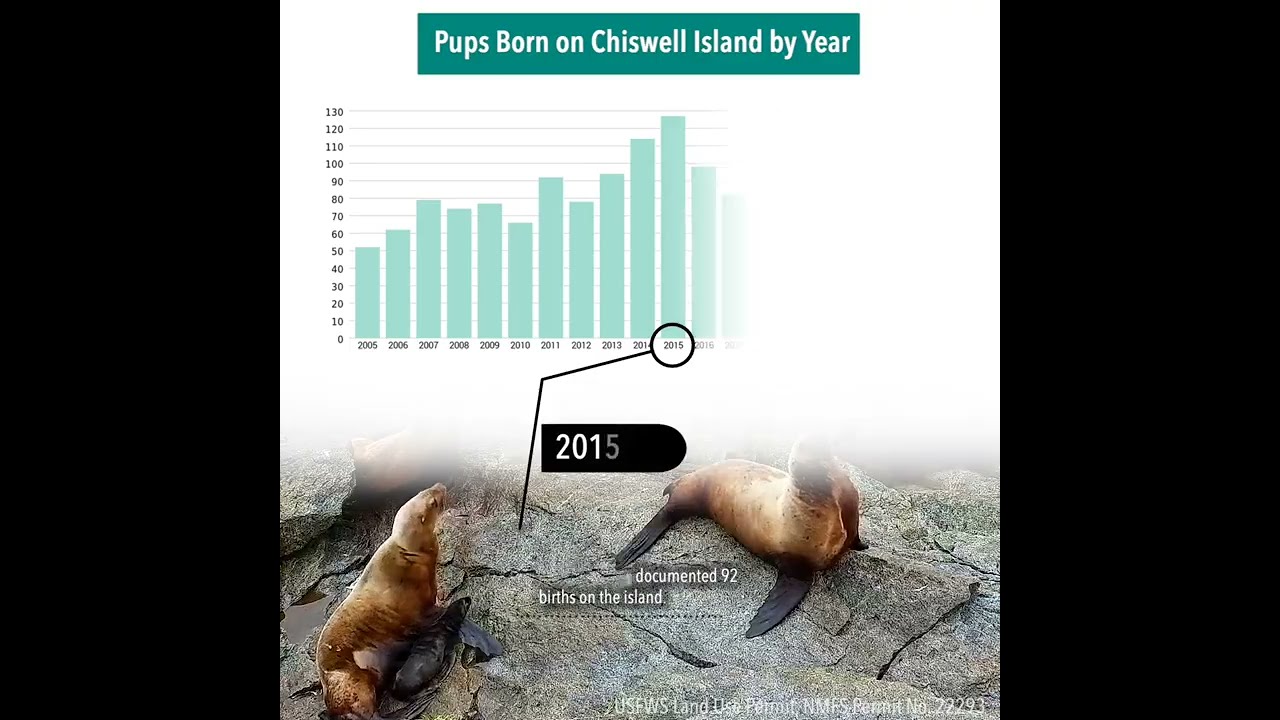Summary:
1. The Data from Monitoring Endangered Sea Lions: Chiswell Island Research 2023 provides valuable insights into the Steller sea lion population and the ecosystem they inhabit.
2. Over 20 years of monitoring on Chiswell Island has allowed scientists to gather extensive data on Steller sea lion births, contributing to our understanding of these marine mammals.
3. The endangered status of the western stock of Steller sea lions underscores the importance of ongoing research and conservation efforts.
4. The team’s observations of 92 Steller sea lion births this year highlight this species’ resiliency and reproductive success.
5. The data collected informs our knowledge of sea lions and provides insights into the wider ecosystem they form a part of.
The world beneath the waves is a mysterious realm, teeming with life and secrets waiting to be unveiled. Within this intricate web of marine ecosystems, the Steller sea lion is one species that captures our attention and admiration. Majestic, powerful, and unfortunately endangered, these marine mammals have been the subject of intensive research and monitoring on Chiswell Island for over two decades. The Data from Monitoring Endangered Sea Lions: Chiswell Island Research 2023 provides us with a treasure trove of information, revealing not only the fascinating aspects of Steller sea lions but also shedding light on the delicate balance of the ecosystem they call home.
In the vast expanse of the ocean, it becomes crucial to keep a watchful eye on the endangered western stock of Steller sea lions. Monitoring their population numbers and reproductive success is essential to understanding the overall health of this species. Chiswell Island, an isolated haven for these sea lions, has become a battleground in the fight to protect and conserve their dwindling numbers.
The dedicated team of scientists and zoologists at ASLC embarked on this monitoring mission over two decades ago, recognizing the urgency to gather vital data on the Steller sea lion population. With every passing year, their efforts bore fruit, and the data collected grew into a comprehensive resource. This year, the team witnessed an awe-inspiring sight—the birth of 92 Steller sea lion pups on the rookery. This remarkable number of births provides hope for the future and contributes significantly to our knowledge of these incredible creatures.
Sea lion births are joyous events and vital indicators of the species’ reproductive success and overall well-being. The observation of 92 sea lion pups is a testament to these marine mammals’ resilience and ability to adapt to changing environmental conditions. It is a beacon of hope in the face of the challenges they face as an endangered species.
Beyond the sheer numbers, the data collected on Chiswell Island allows us to delve into the complex dynamics of this marine ecosystem. By studying the Steller sea lions, we gain insights into the wider web of life they are part of. These marine mammals are not solitary; they interact with their environment and other species in intricate ways. Understanding their behavior, feeding patterns, and migration routes gives us a more holistic understanding of the ecosystem and how it functions.
One fascinating aspect of Steller sea lions is their remarkable intelligence and social structure. They form tight-knit communities, with individuals displaying remarkable communication and cooperative behaviors. Within these communities is a complex social hierarchy where dominance and resource access are keenly contested. Studying the dynamics of these social interactions can uncover invaluable insights into sea lion behavior and shed light on broader evolutionary and ecological concepts.
Moreover, the data from Chiswell Island offers a unique glimpse into the ecological relationships between Steller sea lions and their prey. These marine mammals primarily feed on fish, which makes them both indicators of the fish population dynamics and vital contributors to the overall balance of the ecosystem. By understanding the prey preferences, foraging strategies, and feeding grounds of the Steller sea lions, researchers can identify potential areas of concern or imbalance in the marine food chain.
The plight of the Steller sea lions is emblematic of the challenges many endangered species face. Environmental degradation, climate change, and human activities have all contributed to their declining numbers. However, the data collected through the monitoring efforts on Chiswell Island inform conservation strategies for these marine mammals and provides a broader understanding of ecosystem health and functions.
As we dive deeper into the world of Steller sea lions and their intricate relationship with their environment, we become more aware of the interconnectedness of all life forms. Studying these majestic creatures unlocks the ocean’s secrets enlightening us about the delicate balance that sustains our planet. It reminds us of our shared responsibility to protect and conserve the natural world for generations.
In conclusion, the Data from Monitoring Endangered Sea Lions: Chiswell Island Research 2023 is a testament to the power of long-term research and monitoring efforts. The observations of 92 Steller sea lion births on Chiswell Island provide hope and inspiration, showcasing the potential for species to thrive even in the face of adversity. Beyond the sea lions, this valuable data contributes to our understanding of the wider ecosystem and its delicate balance. It reminds us of the urgency and importance of conservation efforts to safeguard endangered species and preserve the intricate web of life that sustains us all.
*****
Source Description
The western stock of Steller sea lions is considered endangered, which is one of the reasons ASLC scientists started monitoring the population on Chiswell Island over 20 years ago. The team observed 92 Steller sea lions’ births this year on the rookery. This number adds to the many years of data that teaches us not just about these amazing marine mammals but about the entire ecosystem that they live in.


